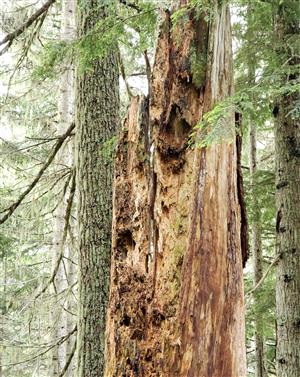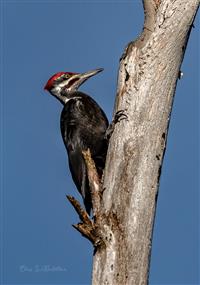 | With a funny name for an important part of the ecosystem, ‘snags’ refer to standing dead trees. Without snags, many different types of wildlife would not be able to survive. More than 100 species of birds, mammals, reptiles, and amphibians use snags for nesting, roosting, shelter, denning, and feeding. 45 different species of animals use snags as a source of food, foraging for insects, grubs, moss, lichen and fungi. These trees provide nesting spots for birds like woodpeckers and wood ducks. Although wood ducks cannot carve out their own holes like a woodpecker can, they require snags to lay their eggs. Most often they will use the spot where a branch has broken off from the snag and the wood has rotted, but sometimes they will take over a hole or cavity constructed by a woodpecker. |
Other birds that depend on cavities for nesting are tree swallows, bluebirds, chickadees, nuthatches, house wrens and owls. Like the wood duck, they do not create their own cavities.
Snags also provide roosting places for bats that crawl into the space between the bark and wood of the tree.
Squirrels, raccoons, porcupines and bears also seek shelter in the right size hole. Squirrels and Steller’s Jays tuck nuts and seeds under the bark and in small holes in the wood. Board member Mark Hitchcock, a retired forest consultant says, “Landowners can help their forests by retaining non-threatening snags and shortening threatening snags.” Thus even next to homes, snags can safely serve as wildlife habitat.
Who would have thought that a dead tree could be so important? It is often said that a dead tree will serve the health of the forest for at least the same amount of time it was alive. Skagit Land Trust leaves snags in place wherever we safely can, and we encourage other landowners to do so too.
|  |
From top to bottom: Example of a snag found in the forest; Pileated Woodpecker photo from Chris Boutillier